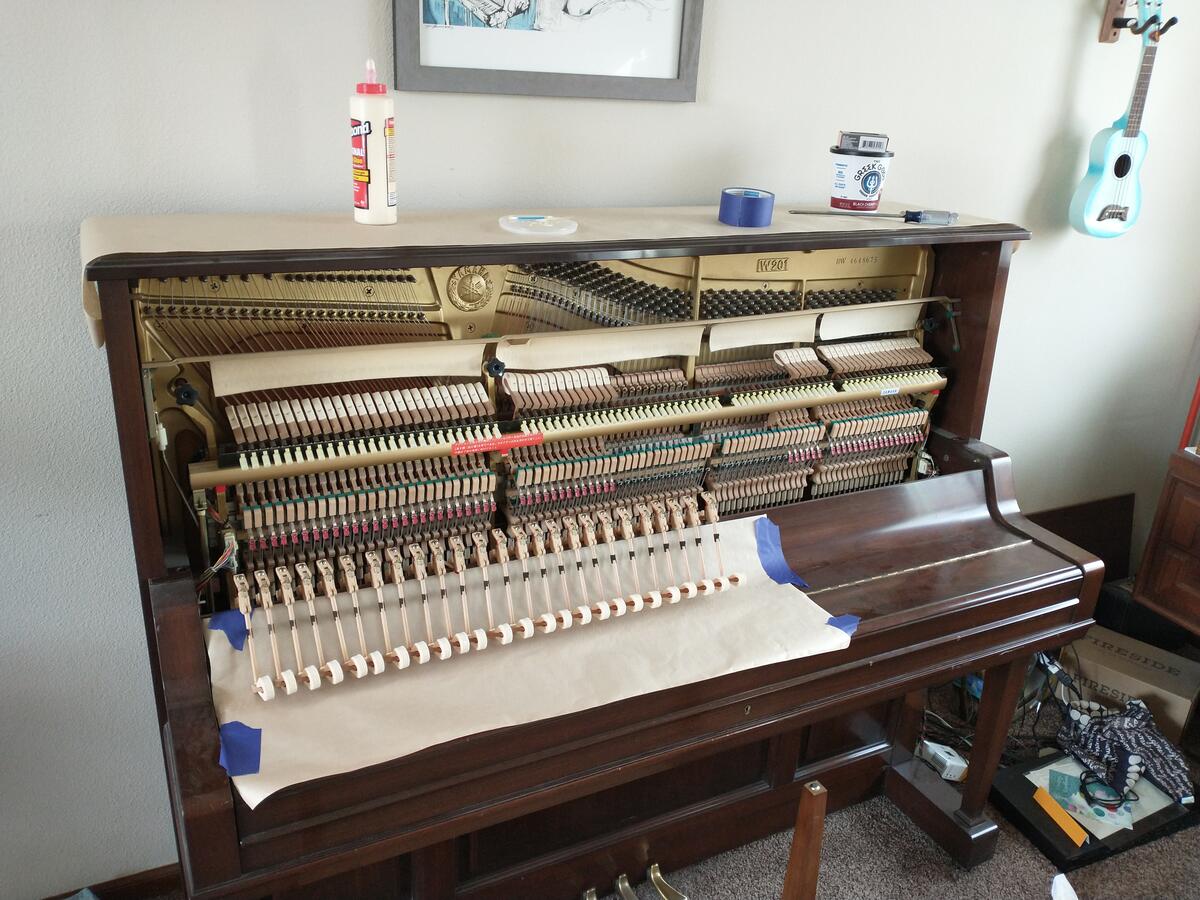We have a Yamaha player piano that I have been using off and on for around 15 years. I remember when we visited a piano store with my mom that we were impressed by the loud, warm tone that it had, and I just assumed that the control unit was some weird stereo that someone had left on top.
This piano weighs significantly more than a typical upright piano. My dad, my brother, and I weren’t even able to lift half of it off the ground to clear a single step, so we had to use ramps to get it up 3 steps from the garage and then up one half step from our living room. When we rolled it through our living room, at one point most of its weight was over a weak point in a 2×10 floor joist and that joist actually snapped.
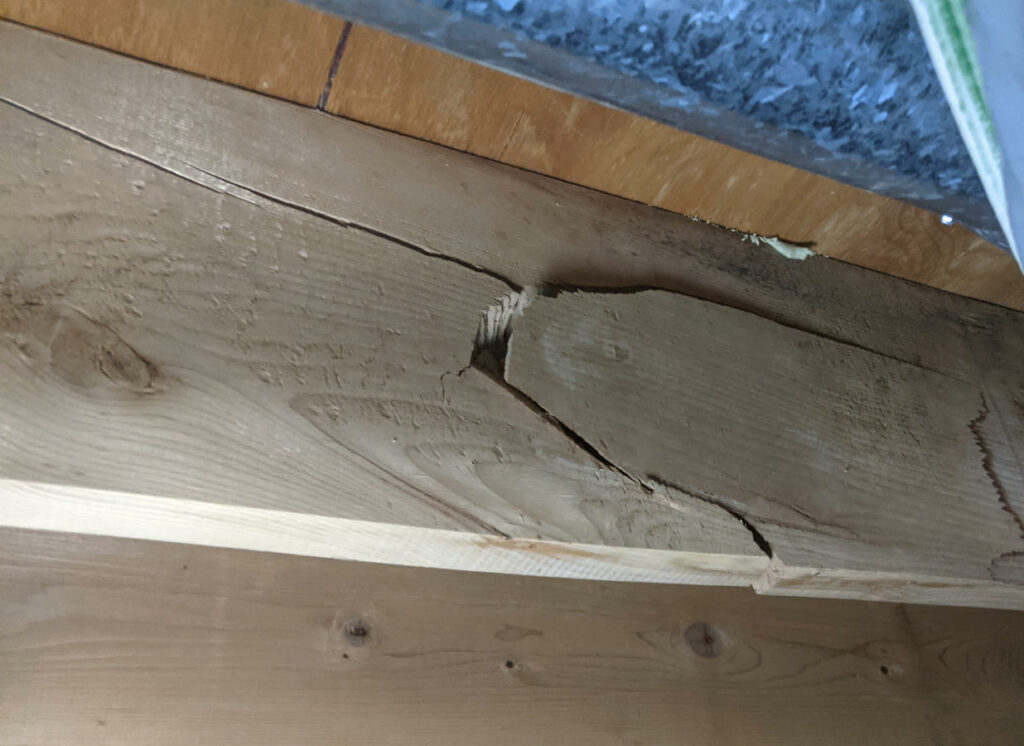
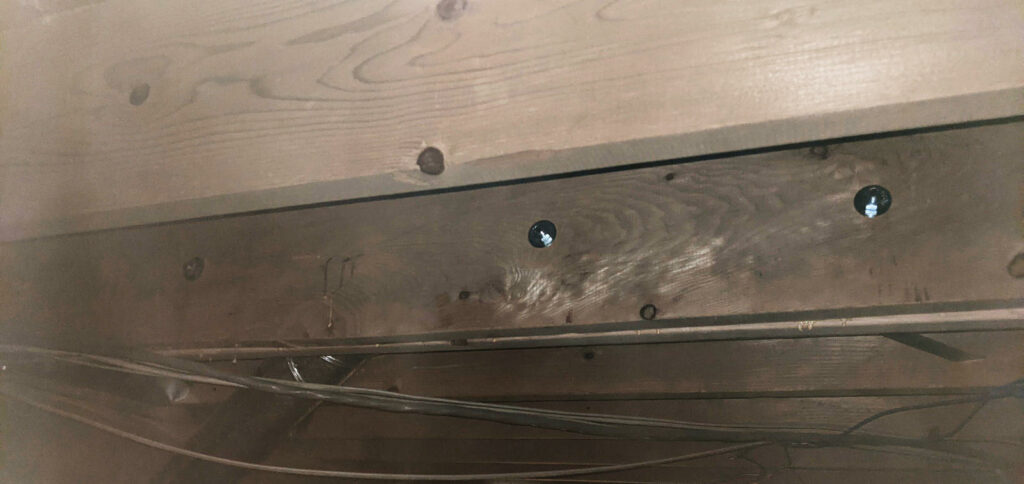
I think the piano is so heavy because there is just more in it. On top of all the things that a regular piano has, it also has 88 solenoids for the keys mounted on a metal track, infrared position sensors on a metal track for the keys (2 per key, I think), 3 large solenoids for the pedals with adjustable interfacing brackets, a power supply, and a controller. That additional weight also needs additional support material, so it’s a thick boy. That density probably also affects the tone of the piano, which might be why I think it sounds so good.
Another note about that control module: all of the buttons and digital interface are in Japanese. I do not speak Japanese, but I do have a reference manual sitting by at all times so I can make a more educated guess what buttons to press to make it work. It has MIDI support, but the controller also reads and writes recordings on 3.5 inch floppy discs. It’s very temperamental, so I keep a pile of those on-hand.
Like all pianos, this one needs some TLC every few years. This time, I worked on fixing these issues in order:
- more of the hammer heads were loose and vibrating, causing annoying distortion
- some of the bridle straps were stretched causing the hammers to return slowly
- most of the hammer hinge pins were falling out, causing the and needed to be reset
- the sustain pedal position sensor was not catching all presses of the pedal, so recordings had unintentional staccato sections
I used wood glue to create a thick joint between the arm and head of the hammer, which eliminates the vibration that I was starting to hear in more keys. Last time I used epoxy, just because I didn’t have any wood glue. For this purpose they are just about equally useful.
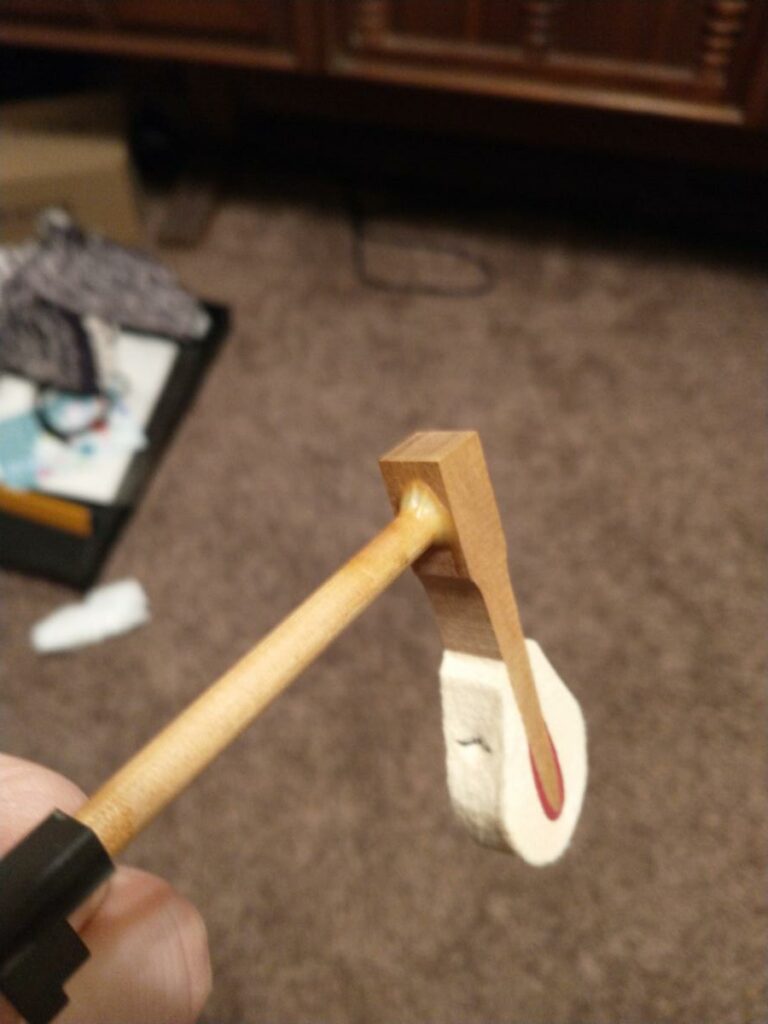
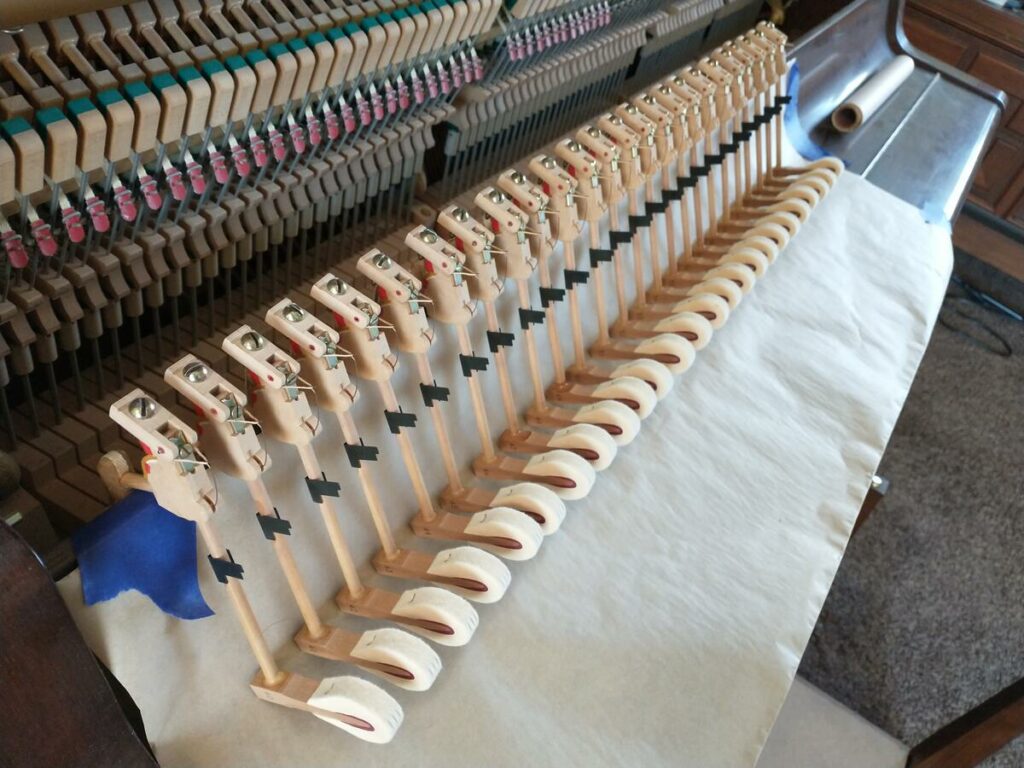
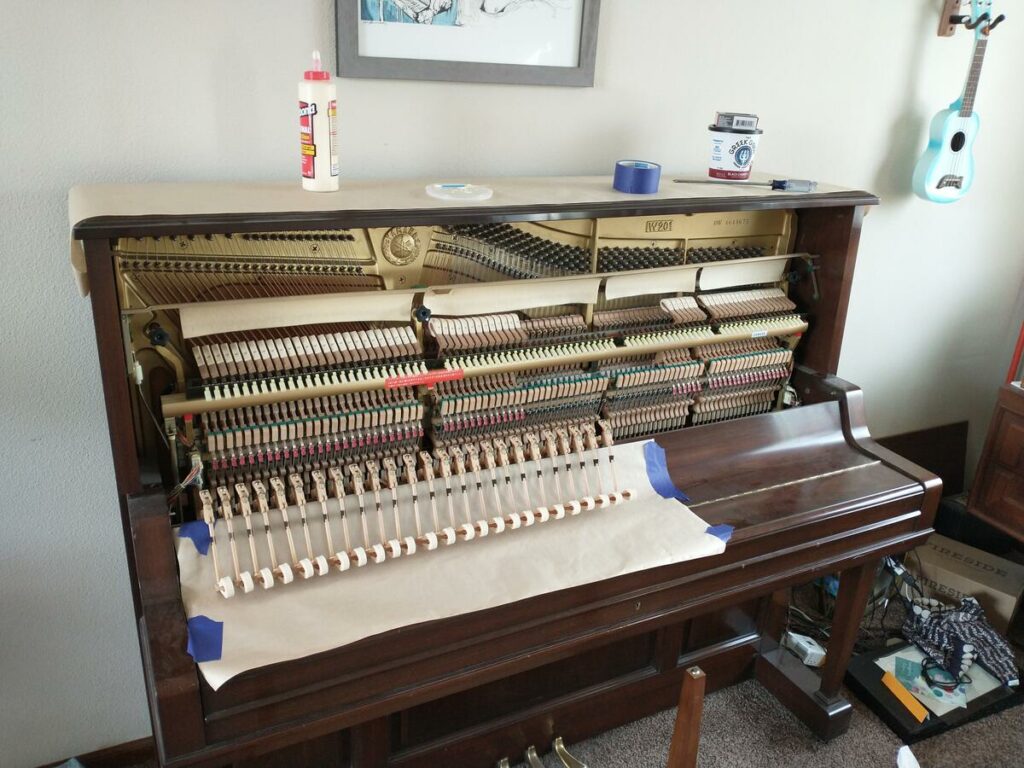
Two of the bridle straps, which yank the hammer when the key is released to return it to its starting place quickly, needed to be shortened. I probably would never notice this while playing piano, I would just assume that I made a mistake, but with the piano open it was very obvious. This could be because they slipped from their original position, or they could have been like that all along. I used a drill to put a new hole in the leather piece of both straps to adjust the length a little bit.
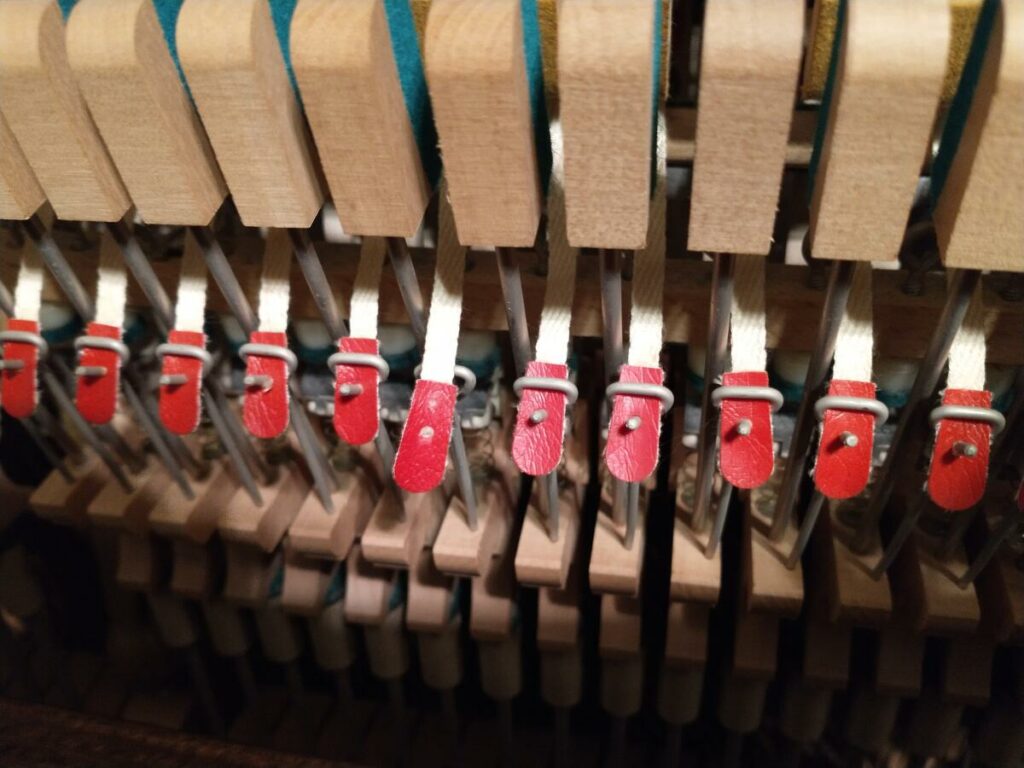
This piano has gone a long time without maintenance, so it doesn’t surprise me that most of the hinge pins on the hammers, which are only held in by friction, had started to vibrate out. It was easy to push the pin back in on all the hammers I removed, but removing the hammers was a huge pain. Instead, I used the flat side of a dull kitchen knife to push the pins back in. The knife was thin enough to lift the pin off from where it would usually come to rest against the neighboring hinge.
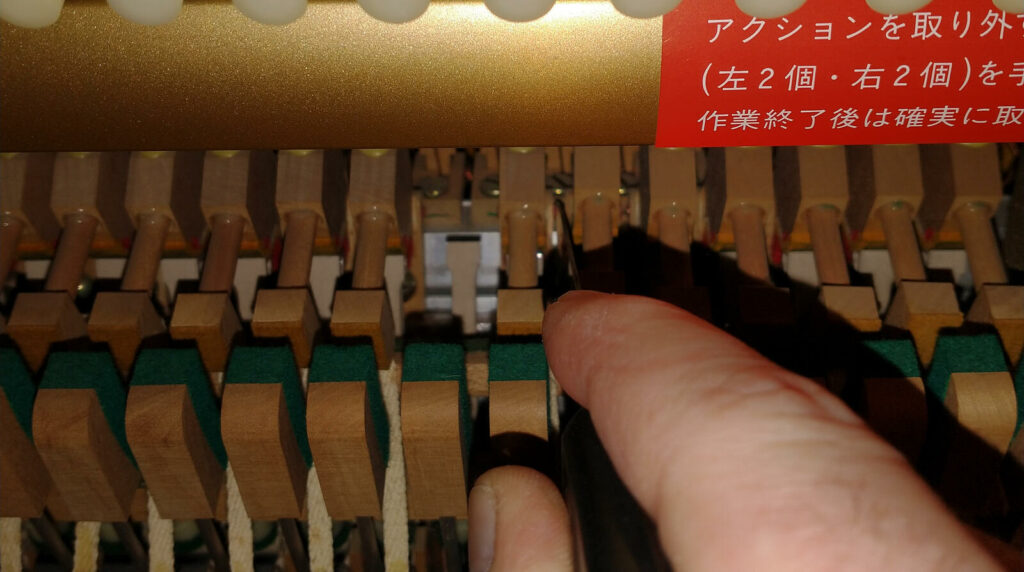
Lastly, it turned out that the sustain pedal was just a bit loose. That wouldn’t matter for me, because the pedal still engaged sufficiently for playing, but it was not usually reaching the level where it would press the switch. I tightened up the pedal a bit and the recording issue went away.
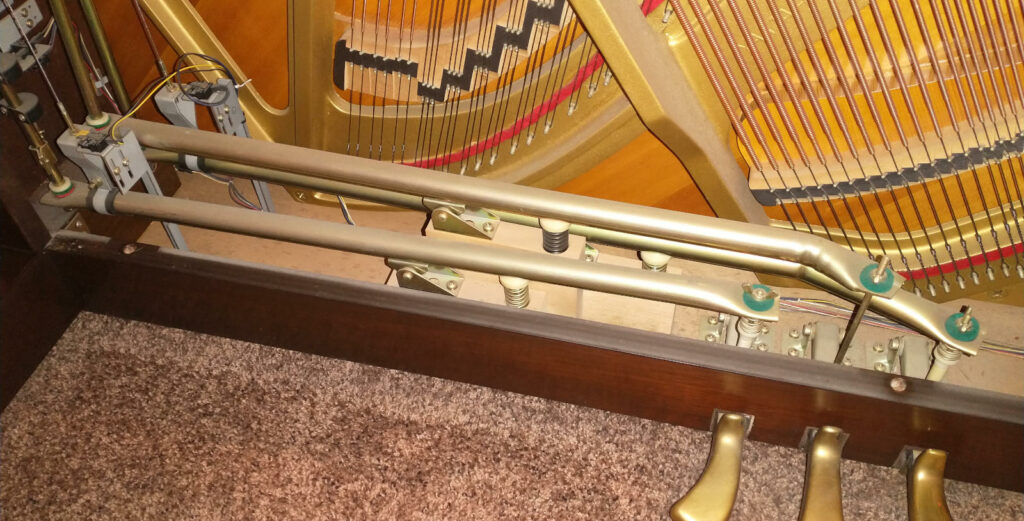
This is a great piano, and with proper maintenance (and a stash of floppy disks) it will last a very long time. Next time I will be tuning it.
Here are a couple of recordings I made once the repairs were done. All the notes from middle F through 5th C no longer have an annoying buzzing sound when the hammer strikes.

